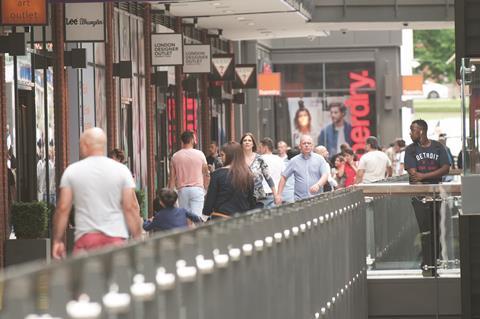Turnover-based rents in the retail and leisure sector are not new. But judging by media coverage in recent weeks, suddenly they seem to be everyone’s favourite route forward for the post-coronavirus world.

We’ve used turnover-based rents at London Designer Outlet, the capital’s leading fashion and lifestyle outlet centre, since we opened almost seven years ago. The benefits are so strong that this is also Quintain’s go-to lease for retail and leisure at its £3bn, 85-acre Wembley Park.
I’ve read the criticism from landlords who say: ‘We have our own business to run; why should we run the retailers’ businesses too?’ This misses the point.
Because turnover-based rents are so closely aligned to individual stores’ or restaurants’ performance, they create a symbiotic relationship between landlord and tenant. In good times, both parties benefit; in less favourable times, both have an incentive to seek improvements. As a result, the LDO team has a really healthy working relationship with our tenants, whether global brands or UK-only retailers.

We’re in tune with retailers and, in turn, visitors. As a result, we can look to enhance our visitors’ experience at the centre and iron out wrinkles that might spoil their enjoyment. For example, it led to the introduction of hands-free shopping over a year ago; we were the first UK shopping centre to offer Dropit, the app-based, store-to-door delivery service. Guests that use this service generally spend more, benefiting the retailers, because the challenge of carrying shopping bags home, or back to their hotel, is removed.
The lockdown has highlighted landlord-tenant relationships and lease obligations. At Wembley Park, Quintain always emphasised that the relationship with tenants was a partnership. The turnover-based rents model has in-built resilience in poor trading conditions – not that anyone could have predicted Covid-19. It meant tenants’ financial burden was mitigated as the turnover element of leases became irrelevant, providing a clearer start for renegotiations.
Strong relationships
The result has been a robust tenant mix, with almost 80% of our retailers reopening on 15 June, including Nike, Levi’s, Puma and Adidas. The remainder have now reopened, as did the restaurants in early July, in keeping with government guidelines, enhanced by our own local initiatives. We agreed individual health and safety plans and procedures with every tenant, demonstrating the strength of the working relationships.
The future of rents in the retail and leisure sector will change considerably in the post-Covid-19 world. Commercial arrangements between owners and occupiers will rapidly move away from quarterly rent payments and regular upward-only reviews. It is a shift away from simply considering what rent a landlord can get for a unit and what yield can be realised. The focus is moving to a stronger consideration of overall tenant mix, a better understanding of potential revenues for each retailer and, in a sector adopting more experiential attractions, greater thought about how a tenant will add to a memorable day out for all guests.
Having worked for seven years with leases where the turnover element promotes strong partnerships, we have seen many benefits. I understand why some asset managers now see them as an essential component of forward- thinking leases for the post-Covid-19 world. They create stronger landlord-tenant relationships because of the mutual benefits. This deeper understanding of tenants’ needs can lead to innovations that benefit all tenants and guests.
At a time when other landlords have been less supportive, the sense that ‘we are all in this together’ has engendered more productive renegotiations of tenants’ terms. That is why turnover-based rents are the best solution for the future of the retail and leisure sectors.
Sue Shepherd is Realm’s general manager for London Designer Outlet






























No comments yet